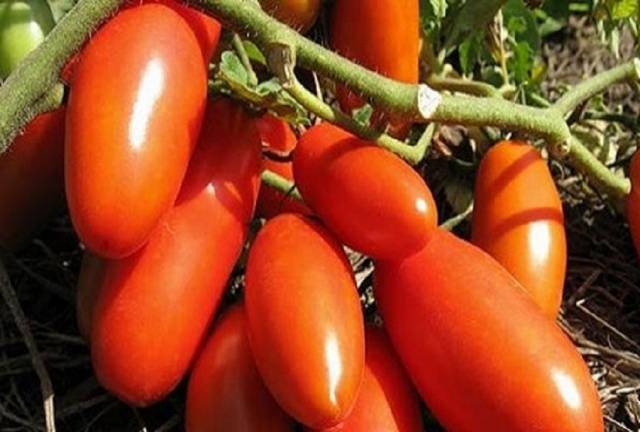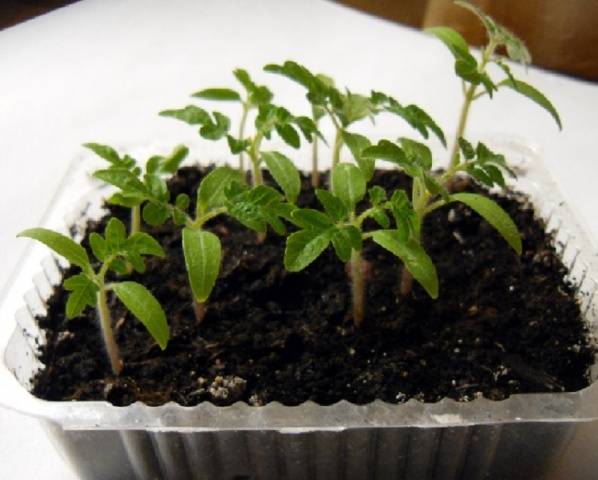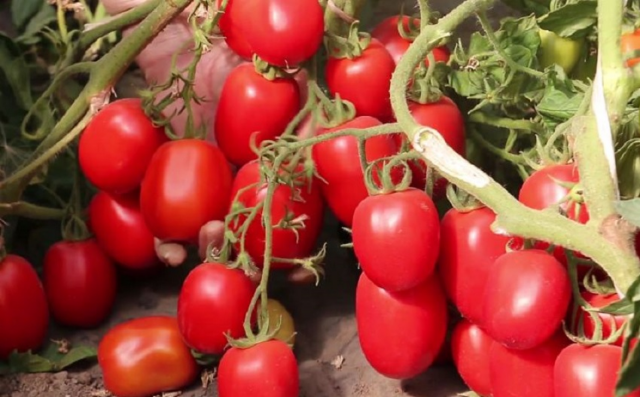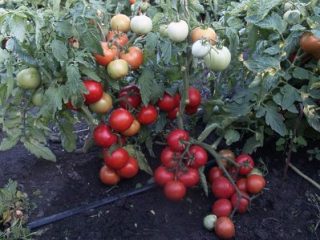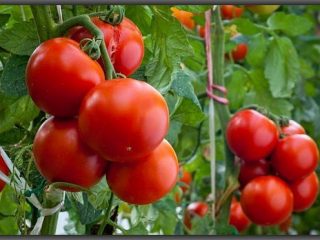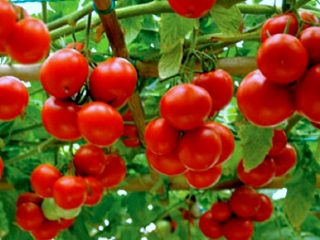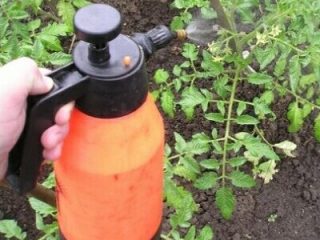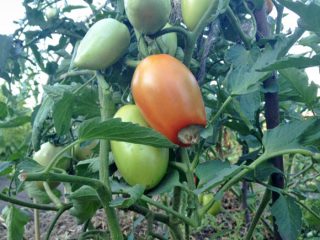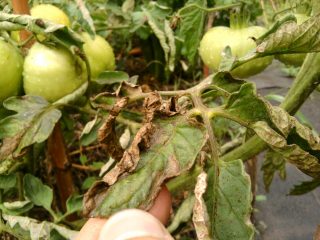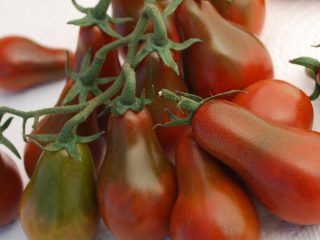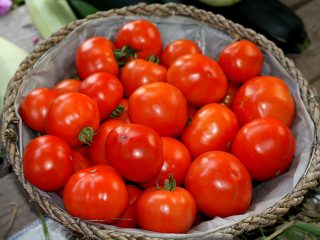Content
To enjoy the taste of ripe tomatoes before the next season, vegetable growers grow varieties of different ripening periods. Mid-season species are very popular. They are inferior to early ones in terms of harvesting time, but are valued for their ability to preserve fruits longer and make high-quality preparations. Mid-season varieties include the magnificent Gazpacho tomato, the characteristics and properties of which we will consider in the article.
Features of mid-season tomato
Choosing a new variety always causes some difficulties. Tomato varieties differ in many ways. Growing conditions also leave their mark. Ground tomatoes are much tastier, greenhouse tomatoes are better able to resist diseases, early tomatoes do not always have a rich taste, and late tomatoes often have to be picked unripe in cold summers. But there are universal varieties of tomatoes that save vegetable growers from many problems. “Gazpacho” is on the list of species that remain favorites of summer residents for a long time due to their qualities.
When describing the Gazpacho tomato variety, you need to pay attention to the following characteristics:
- Type of bush. Determinate, low growing, strong, medium leafy. The height of an adult plant does not exceed 45-50 cm.
- Ripening period is average. Tomatoes ripen 115-120 days after germination.A very convenient time for creating a varied menu and culinary preparations.
- Fruit quality. Tomatoes of the Gazpacho variety are cylindrical in shape and rich red in color. Covered with smooth shiny skin. The taste of the fruit is sweet, very pleasant and memorable. The pulp is juicy and fleshy, allowing you to use tomatoes to make aromatic juice. The weight of tomatoes ranges from 75 to 90 grams.
- The productivity of the variety is high. With good care, more than 4 kg of ripe, tasty Gazpacho tomatoes are harvested from one plant (see photo).
- The keeping quality and transportability of the variety deserve the attention of farmers. Tomatoes do not lose their commercial quality for a long time if optimal storage conditions are created.
- Growing method. The Gazpacho tomato variety is recommended for open ground, but many farmers also grow it in greenhouses. The most important thing is that the result does not disappoint.
- The resistance of the Gazpacho tomato to diseases and climatic changes is quite high.
The described qualities of the variety will be very clearly expressed if the agricultural technology for growing mid-season tomatoes is carefully observed, which will be discussed below.
Preparing and growing seedlings
If you decide to grow the Gazpacho tomato variety, then it is better to abandon the seedless method.
This will allow the already strong seedlings to be planted in the ground early and the harvest to be harvested on time.
In their reviews, vegetable growers note that it is better to plant Gazpacho tomato seedlings in a permanent place no later than the first ten days of June. Therefore, the sowing date is set for the middle or end of March so that the seedlings have time to grow. Sowing too early is also undesirable. Tomato seedlings may outgrow and will not take root well.The optimal age of tomato seedlings of the mid-season Gazpacho variety for planting in the ground is 55-60 days.
You should be careful when purchasing seeds. Although the seeds of the Gazpacho tomato variety can remain viable for up to 7-8 years, it is better not to use planting material older than 4-5 years. It’s good if you collect tomato seeds yourself on your own plot. In this case, you can be sure that the healthiest and most productive bushes are selected for harvesting.
According to gardeners, tomato seeds of the Gazpacho variety can be sown either dry or pre-soaked. This does not affect the yield indicator. For soaking use:
- Ash infusion. In 1 liter of hot water stir 2 tbsp. spoons of wood ash and leave for two days.
- Fitosporin-M solution. This drug will not only improve the germination of Gazpacho tomato seeds, but also protect against fungal infections.
Before sowing tomato seeds, you need to prepare the soil mixture and container. A good option is to collect all the components for the soil in advance (in the fall). You will need to mix peat (2 parts), compost (1 part), turf soil (1 part), sand (0.5 parts), a little complex mineral fertilizer (2 tablespoons) and wood ash (1 cup). According to reviews from summer residents, this composition will increase the yield of the Gazpacho tomato, and the bushes will be strewn with ripe fruits as in the photo.
To properly care for seedlings, vegetable growers sow Gazpacho tomatoes in special containers or plastic containers. When growing seedlings, they need to be planted, so the container should be convenient. The containers are washed with a disinfectant composition, dried and filled with soil.
When sown in boxes, the seeds are placed in rows to provide comfortable conditions for care.
Then lightly sprinkle with earth and cover with film. Until the tomato sprouts, the temperature is maintained at 23°C-25°C. As soon as sprouts appear on the surface of the earth, the container is moved closer to the light and the temperature is reduced to 16°C -18°C.
After 2 weeks, the tomato seedlings need to be pruned. Plants are buried down to the cotyledons and shaded from sunlight for a couple of days. When transplanting, try not to damage the roots.
Further care for seedlings of the variety:
- Very good lighting. Do not forget to turn the container around its axis so that the tomato seedlings do not tilt. And you will also have to add additional lighting if there is no sun or the day is very short.
- Watering without fanaticism. Excessive zeal will harm Gazpacho tomatoes more than indifference. Overwatering will cause trouble in the form of “black leg” on seedlings. Therefore, a little warm water will be enough when the top layer of soil dries out.
- Feeding. If the soil is purchased, then at first the Gazpacho tomato seedlings are not fed. The mixture contains enough nutrients. If the soil was prepared independently, then after 2 weeks the seedlings are fed with complex mineral fertilizer. The solution is made weak, reducing the concentration by half than it should be for adult tomatoes.
- Hardening. Tomato seedlings are constantly ventilated, and 2 weeks before planting in a permanent place, they begin to intensively harden them. Intensively does not mean immediately. The plants are gradually accustomed to the temperature in which they will have to grow further. This also applies to solar lighting.
Vegetable growers consider Gazpacho tomato seedlings ready for planting if they have a stem up to 30 cm high and 6 full leaves of a dark green hue.
Planting in the ground and care
The first days of June, when it gets warm, is the best time to plant the Gazpacho tomato variety. In the southern regions, you can shift the deadline by a whole month.
For the first two weeks, the plants do not need to do anything other than watering. Then vegetable growers will need to devote time and attention to tomatoes:
- Weeding, loosening, mulching beds. According to reviews from summer residents, these procedures should not be ignored when growing Gazpacho tomatoes.
- Feeding. The variety responds well to nutrition with mineral fertilizer complexes. During the growing season, 2-3 fertilizing is enough for the tomatoes to bear fruit well. At the beginning of tomato growth, formulations containing more nitrogen components are used. During the period of flowering and formation of ovaries - potassium.
- Preventive treatments. To avoid having to deal with pests and the consequences of diseases, at least 3 treatments of the Gazpacho tomato are carried out during the season. The first time is 2 weeks after planting the seedlings, then at intervals of at least 14 days.
Among the pests that can harm Gazpacho tomatoes are mole crickets, Colorado potato beetles, aphids and slugs. Vegetable growers are recommended to use the following drugs to combat parasites:
- Aktofit;
- Bioslimax;
- Nature Guard.
For those who prefer natural remedies, folk recipes are suitable. Infusions of garlic, nettle and soap have proven themselves well.
Sometimes vegetable growers note poor germination of the variety's seeds, so there is an alternative solution - collecting tomato seeds yourself. To do this, choose the best fruits, which are located on the first or second cluster.
Fully ripened tomatoes are placed on a plate and left in the light. After a week, the fruits are cut, the seeds and pulp are removed and again left to ferment. Then the seeds are washed, dried in the shade and sent for storage.
Reviews
